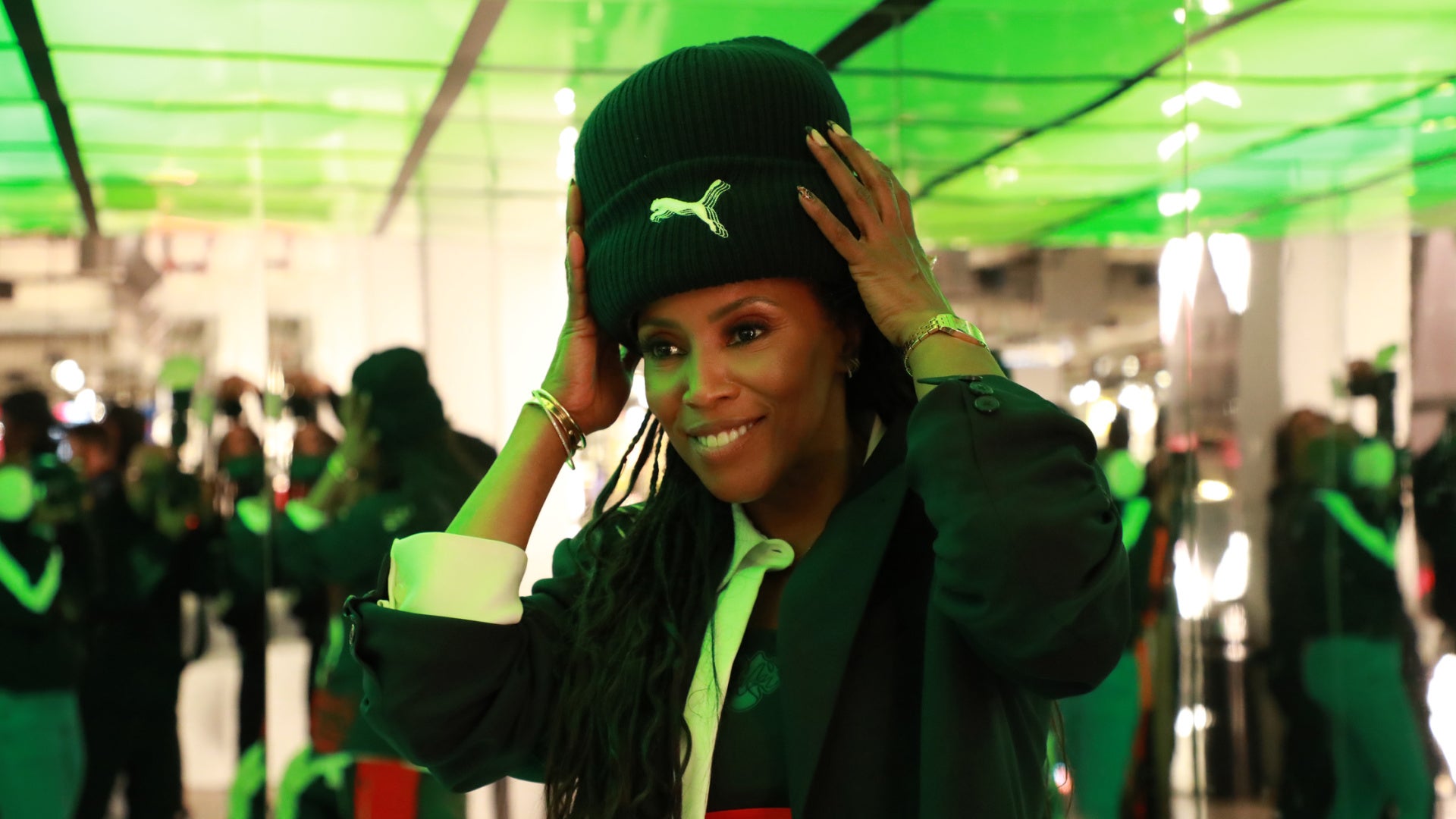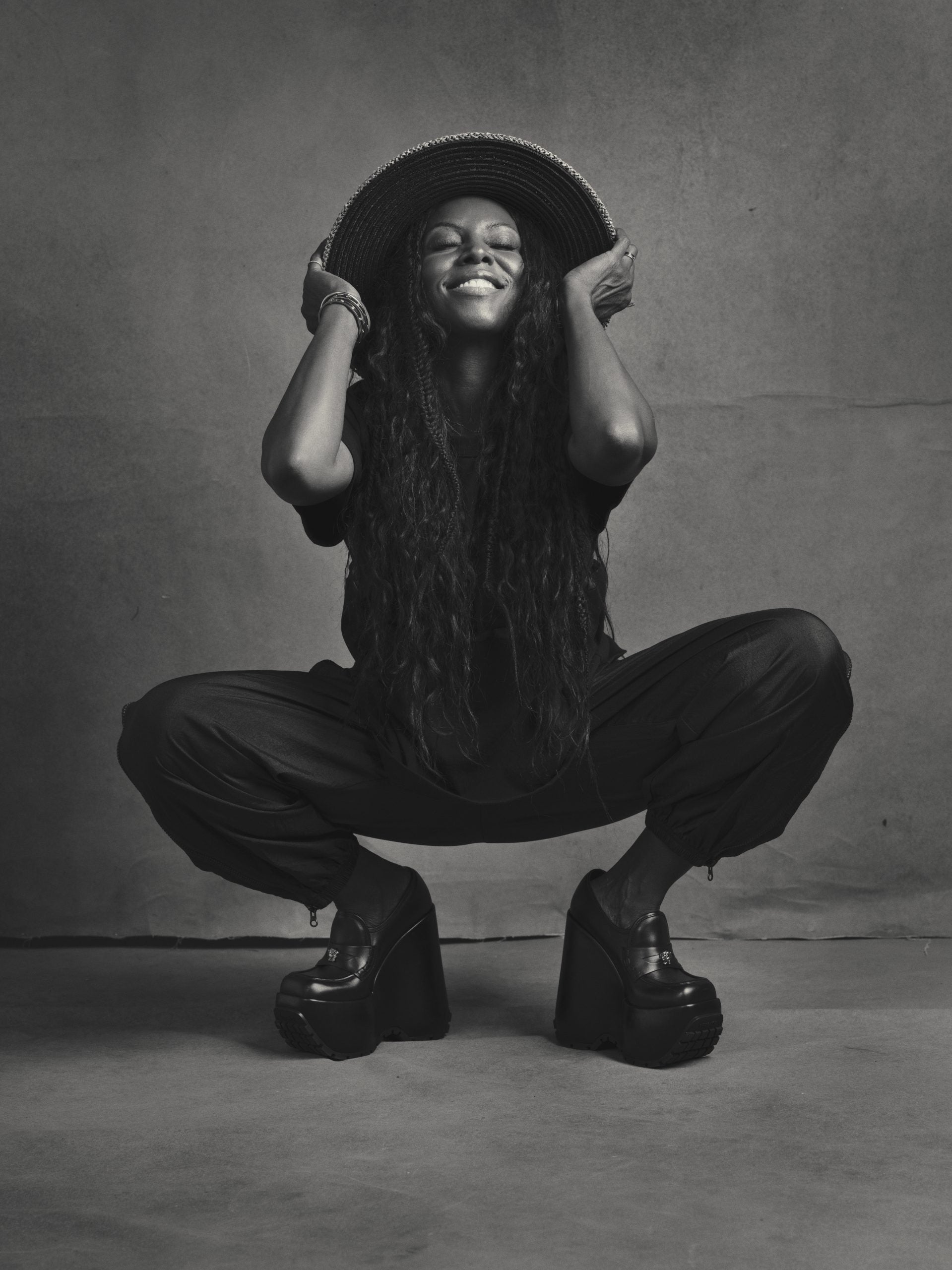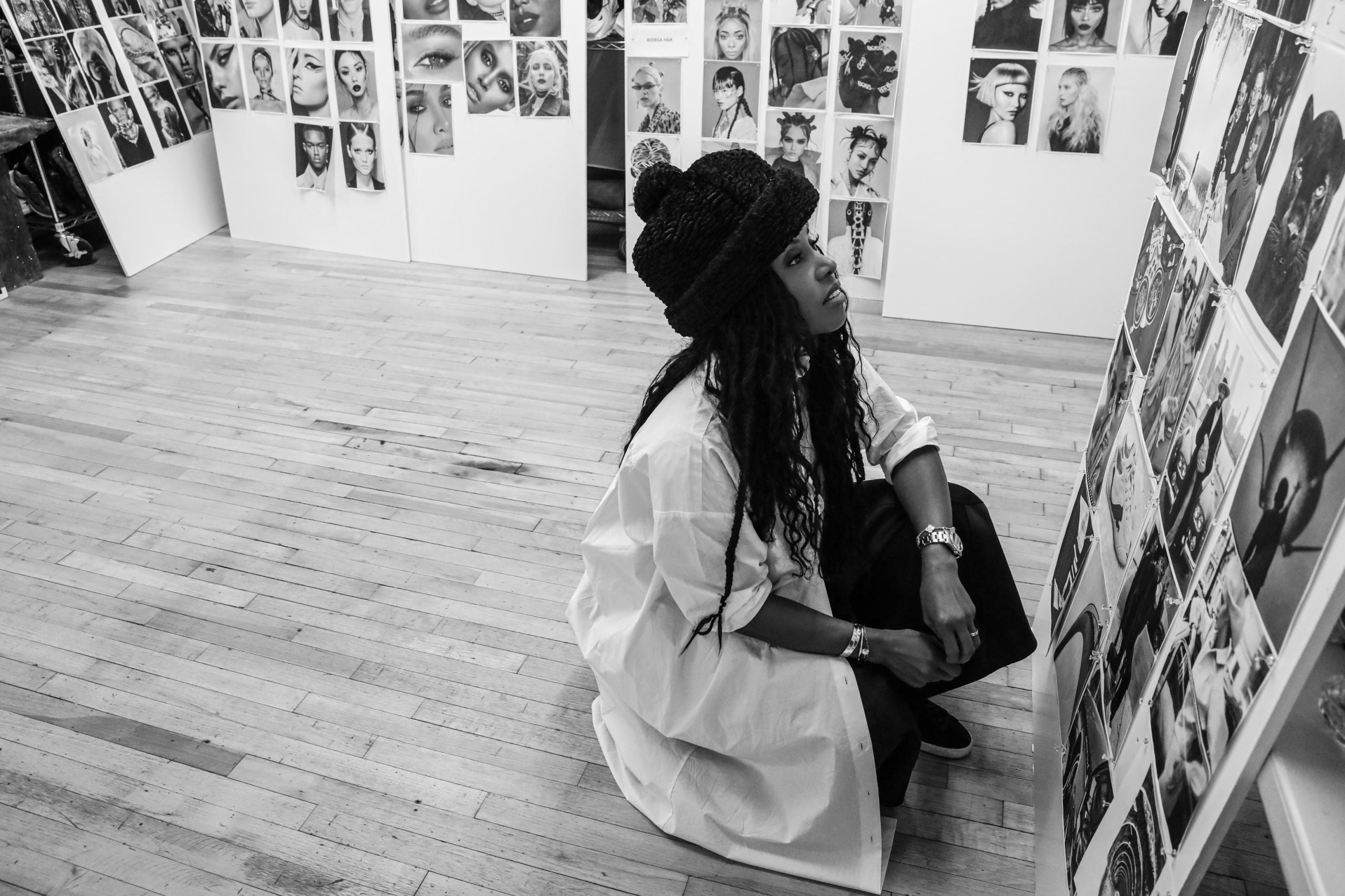
June Ambrose; you can refer to her as a creative director, a costume designer, a style consultant, etc., just as long as you put “iconic” in front. June Ambrose, along with many contemporaries of the 90s and early aughts, carved out a niche within the fashion space that soon became global. We can attribute the synergy between hip hop and fashion in part to Ambrose. From the infamous 90s videos of Missy and Diddy (remember those shiny red suits) to suitfying rap and her most recent work at Puma. In 2020, she was appointed Creative Director of the sportswear powerhouse, tasked with bringing her signature stylistic approach to the brand.
“I always love talking to Essence — it’s Bible, Black people’s Bible.” We caught up with the style aesthete via zoom ahead of Puma’s NYFW showing and chatted all about how her background in wardrobing influences her design process, the moodboard for SS 23′, the importance of nostalgia, Puma’s long-standing relationship with hip-hop, and what to expect from the NYFW activation.

On the SS 23′ Mooboard:
Past, Present & Future. The past history of Puma sportswear and just performance sportswear and lifestyle sportswear from everywhere to everyone, all the way back from the 40s into the 60s, 70s, and 80s. Until the present, that’s the first moodboard. My second moodboard is about street culture and how it’s evolved worldwide. Think cartoons from the 70s that tapped into that chapter to street and urban culture, growing up in textured neighborhoods, super big brownstones, the bodega, the energy of kids coming together, etc. My third board, it’s the future of how I see sportswear. It’s less about performance but more about technology and tech. It’s animated, and it feels like the air is different. It’s not Earth, it’s something altogether different; It’s the Juniverse.
A Lesson In Restraint:
(On working with Puma) I’ve learned restraint. Because naturally, that’s the hardest thing to do for creatives, especially people with expressive viewpoints. I’ve learned to kind of look at things very critically and clinically. I’ve always looked at things clinically, but now I think about it from every aspect. From the marketplace to numbers, it’s not just about the garment but how it will serve all these different types of individuals globally. I think I’ve definitely become a more critical thinker as it relates to design. Whereas before, it was a great costume for these videos across from the stage. You know, it’s a great moment for, you know, red carpet. But this is a different creative process and another skill. And much of what I’ve learned throughout my career has helped me take risks in places I wouldn’t usually take.
tktk
Ethos of the collection:
Audacity, lifestyle, & street savvy.
Career Lessons:
Much of what I’ve learned throughout my career has helped me take risks in places I wouldn’t usually take. And also shift the culture into, you know, being on the outside coming in, and, you know, helping people to understand that, that everything is moving streetwear. And I think that is such a bold and big statement is this bold as me saying, almost three years ago, it was going to be the number one genre in the world of music, and it is. So it’s like, there are so many aha moments in the experience, but I think I’m only able to be in this position because of the journey I’ve been on.

On Nostalgia:
Everything is rooted in nostalgic moments, even like now designing the different pieces and working throughout the show— everything is rooted in nostalgia. When I was creating these different pieces and working throughout the show, and I got a great idea, then I tried to delve into my research, and I’m, like, “shit, it’s been done already.” Everything’s been done. You have to lean more into how you reimagine it and reinterpret the how because you also want to create things that are tangible, at least I do. To create these over-the-top avant-garde moments for this particular narrative doesn’t make sense. So I have to find a medium between both conversations, creating something that’s very runway but also something that lends to a brand consumer-facing moment. There will be ready-to-buy moments in the show alongside more conceptual moments, so you want the consumer to feel like they can purchase these things.
It becomes more about interpretation. Nostalgically, there are so many excellent references and people who have laid the great groundwork. I like to think I’m one of those people, so I delved into my old bag of tricks, looked at things that I’ve done, explored aesthetics as far as the 40s and the 50s, and had a lot of fun reimagining things where we started. Take the T7 tracksuit, which is, you know, the brand’s DNA is one of you know, as far as classic evergreen tracksuits, I wanted to give it its moment, you know, what I mean? I wanted to give it its’ flowers. This tracksuit it’s been rooted in the brand since its inception; let’s celebrate its iconic moment, the fact that it’s still in the lineup. It’s like their classic tee. So I’ve started pointing out those moments that felt like great highlights and aha moments for the brand—and reimagining those moments.
On what to expect:
The show is not a typical runway show. This is more of an experience. It’s not like going to a Broadway or fashion show. It’s a brand moment, but these collab moments are also being presented within to show, like my first branded collab is in the show. There’s June Ambrose x Puma, and there’s a Dapper Dan x Puma, but then it says select or lifestyle product that is Puma, alongside 40, something new designs that I have designed to work within the conversation of the section of the show. So this is not a traditional show. The way you’ll experience it won’t be like, you’ll sit down like you’re about to see a traditional show, but then you’ll be immersed into like 75 years of Puma.
Sneak Peak:
I want everyone to be truly surprised, but there is this one piece that celebrates someone who I feel is super iconic, and I’m going to celebrate her during the show. You’ll have to find me after the show so we can talk all about it.